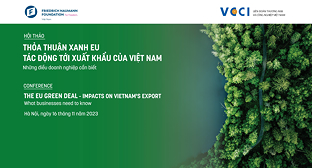WTO Regulation of Subsidies to State-Owned Enterprises (SOEs)
26/08/2008 12:00
Julia Ya Qin
Either China commits to privatize and liberalize its SOEs over the next decade, or the fabric of the WTO will be ripped. The operation of a giant state-owned sector, protected by numerous barriers and enjoying unusual privileges, functioning alongside private enterprise in the world trade and investment system, is bound to cause tremendous friction. - Gary Hufbauer (1998)
China’s government-owned, or state-operated or owned, enterprises are a big challenge to the system, and it is hard to believe this will not shape some of the thinking about subsidies. ... one can predict that in a couple of years some of the definitions in the subsidies code will have to be revised, if that is manageable. – John H. Jackson (2003)
The dire warning by Hufbauer before China’s accession to the World Trade Organization (WTO), and the intriguing prediction by Jackson thereafter, both speak to the issue of subsidies to state-owned enterprises (SOEs). The existence of a large number of SOEs in China has apparently been perceived as fundamentally incompatible with the world trading system. However, exactly what are the special problems caused by SOE subsidies for the world trading system? To what extent are the standard WTO subsidy disciplines inadequate to address the issue of SOE subsidies in China and why? How are the problems regarding SOE subsidies addressed by the China Accession Protocol3 (the China Protocol or the Protocol), which sets out the terms for the application of the WTO Agreement to China? Is the Protocol approach effective in addressing the problems? And what are the implications of the Protocol approach for the WTO legal system? There has not been much discussion concerning these questions.
This article offers a preliminary discussion of these and related issues. It proceeds as follows. Section I introduces the subject of subsidization of SOEs in the context of WTO disciplines. Section II turns to an overview of the SOE situation and various types of SOE subsidies in China. Section III reviews the Protocol provisions that directly or indirectly regulate Chinese SOEs and government subsidies to them. Section IV provides a critical analysis of the key Protocol provisions and examines the legal and policy implications of the Protocol approach towards the issue of SOE subsidies. A summary conclusion is set out in Section V together with certain specific recommendations.
Either China commits to privatize and liberalize its SOEs over the next decade, or the fabric of the WTO will be ripped. The operation of a giant state-owned sector, protected by numerous barriers and enjoying unusual privileges, functioning alongside private enterprise in the world trade and investment system, is bound to cause tremendous friction. - Gary Hufbauer (1998)
China’s government-owned, or state-operated or owned, enterprises are a big challenge to the system, and it is hard to believe this will not shape some of the thinking about subsidies. ... one can predict that in a couple of years some of the definitions in the subsidies code will have to be revised, if that is manageable. – John H. Jackson (2003)
The dire warning by Hufbauer before China’s accession to the World Trade Organization (WTO), and the intriguing prediction by Jackson thereafter, both speak to the issue of subsidies to state-owned enterprises (SOEs). The existence of a large number of SOEs in China has apparently been perceived as fundamentally incompatible with the world trading system. However, exactly what are the special problems caused by SOE subsidies for the world trading system? To what extent are the standard WTO subsidy disciplines inadequate to address the issue of SOE subsidies in China and why? How are the problems regarding SOE subsidies addressed by the China Accession Protocol3 (the China Protocol or the Protocol), which sets out the terms for the application of the WTO Agreement to China? Is the Protocol approach effective in addressing the problems? And what are the implications of the Protocol approach for the WTO legal system? There has not been much discussion concerning these questions.
This article offers a preliminary discussion of these and related issues. It proceeds as follows. Section I introduces the subject of subsidization of SOEs in the context of WTO disciplines. Section II turns to an overview of the SOE situation and various types of SOE subsidies in China. Section III reviews the Protocol provisions that directly or indirectly regulate Chinese SOEs and government subsidies to them. Section IV provides a critical analysis of the key Protocol provisions and examines the legal and policy implications of the Protocol approach towards the issue of SOE subsidies. A summary conclusion is set out in Section V together with certain specific recommendations.
Các tin khác
- The Dispute Settlement Crisis in the World Trade Organization: Causes and Cures (16/03/2018)
- Modification of trade defence rules regarding non-market economy costs and prices (23/02/2018)
- Research Paper: Options for Disciplining the Use of Trade Remedies in Clean Energy Technologies (03/08/2017)
- Addressing the rise of Trade Remedies against Environmental Goods (03/08/2017)
- Anti-dumping Retaliation - —A Common Threat to International Trade (15/11/2016)
 Home
Home
 About Us
About Us




















